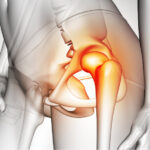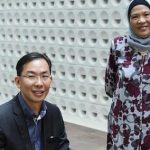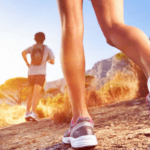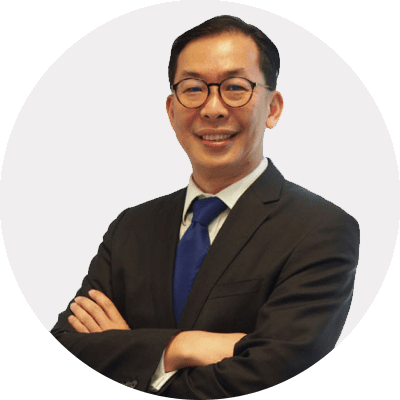Reporter Turns Medic In Pakistan
February 25, 2014
Dr Chin Pak Lin from TOC volunteered his orthopaedic expertise in Pakistan for medical aid after the Oct 8 earthquake in 2005. Reporter Ben Nadarajan, from The Straits Times, wrote about his stay with Dr Chin Pak Lin and the Singapore relief team:
At a makeshift hospital in Muzzafarabad, I had to put my reporter’s notebook and camera aside briefly to become a medical aide.
I handed a blade and gauze to a surgeon in the midst of surgery, learnt to poke a needle into a child’s vein for a drip and to clean a wound with iodine-soaked cotton wool.
I’m not squeamish around blood or fractured bones, and having witnessed the first terrible days of last December’s tsunami in Sri Lanka, I have come to take in stride the stench of death.
Until now, I’ve steered clear of playing medic for fear of doing more harm than good to people already suffering dreadfully.
But everything is different now in this once beautiful city, reeking with the smell of corpses and filled with the moaning of people injured horribly in the earthquake tragedy of Oct 8.
So far, the authorities say 38,000 have died in Pakistan, over 62,000 are injured, and 3.3 million are homeless.
Many of the injured are brought from the worst-hit areas to Muzzafarabad for treatment at emergency hospitals and camps, where doctors and nurses have been working round the clock to amputate, stitch, treat, bandage and despatch patients as quickly as they can.
Over the past few days, I’ve discovered that in a crisis like this, every pair of hands counts. Even mine.
Since arriving last week, I’ve been staying with a team of six doctors, nurses and volunteer workers from Singapore non-governmental organisation Mercy Relief and the SingHealth group at a camp for internally-displaced people.
It was set up within an army camp and a team of 10 Pakistani medical staff came from nearby cities to help out.
There are about 200 people living under tents and, every day, about 200 arrive with fractured limbs and injuries to the head or body.
Those who are well enough are sent off after treatment and medication, but the seriously injured lie under a canvas canopy held up by wooden sticks which give way in strong wind.
I was at the makeshift operating theatre when a woman, whose leg was badly infected from an open fracture, was having her wound cleaned by Singapore orthopaedic surgeon Chin Pak Lin and a Pakistani doctor.
As I knelt beside the Pakistani doctor and adjusted my camera to get a good angle for a picture, a hand came right into view and a voice said: “Blade.”
I looked up, unsure if the doctor was speaking to me. He repeated his demand: “Blade.” And he pointed to the table beside me.
I tried to find his blade from the numerous boxes laid out on the table. I flipped through several before I found what he needed.
I handed him a blade, still in its wrapping. He gave an impatient grunt and shoved it back to me, saying: “Remove the cover.” Veteran Singapore nurse Zaiton Mohamed Tahir looked up from what she was doing and told me: “Just peel it off at the top.”
That done, I returned to taking photos.
But the hand blocked my lens again, and this time the doctor said: “Gauze.”
I handed him a bandage. It was not gauze. That grunt again. And again, nurse Zaiton pointed to the right item.
That was only the beginning of my instant medic training that day.
I also cleaned wounds, performed injections under the instructions of a doctor who was busy attending to another patient, and ran around getting doctors and nurses the right equipment or medicine they needed.
Meanwhile, Straits Times photographer Ong Chin Kai was also experiencing some of the same.
He was with a team of Singapore Civil Defence Force personnel who choppered into Chinari village, about 40km south-west of here, to stabilise the injured before they could be evacuated to hospital.
Midway, he decided to stuff his camera into his bag temporarily and put his hands to better use, helping to carry the injured on stretchers.
At the triage station, he learnt to tag the patients according to how serious their injuries were. He was told to write on patients’ foreheads, or on surgical tape pasted to their foreheads, each person’s priority for evacuation for treatment, with No. 1 as top priority.
This wasn’t what either of us expected to do, but if you only saw how short-handed the crisis workers were, you too would pitch in no matter how little you knew to do.
Afterwards, the patients would look at us with gratitude written on their faces, thanking us through their pain. Family members came to shake my hand after a patient’s condition had stabilised, even though I had done so little.
The medical staff here are on call 24 hours a day.
The Singapore team, comprising Dr Chin and Dr Fatimah Lateef and nurses Zaiton and Jaafar Yusof, work from morning to evening, but a head may pop into their tent at any time, asking for help.
There were plans to move the makeshift operation to a partially-destroyed hospital building, but the pillars there were found to be bent and the idea was squashed.
The Singapore team will stay for two weeks before a replacement team arrives. For now, it’s an emergency room situation, day and night.
We were already asleep one night when someone came asking for Madam Zaiton. It was 11pm and a teenage girl who had injured her pelvic area needed help to pass urine.
A nurse of 30 years and a midwife at the Singapore General Hospital, Madam Zaiton went right away. I accompanied her and helped to hold up a blanket as a screen, while she used a catheter to give the girl some relief.
Looking at the patients made me wish I could do more. They were mainly men and children lying on beds and shivering in spite of their woollen blankets as the temperature here drops to below 6 deg C.
Later, a Pakistani man came and pleaded with me to see his son because the boy would not stop crying. I had to apologise repeatedly for being unable to help. Fortunately, a doctor came along.
“Sorry to disturb you,” the man told me. “I just cannot bear to hear people cry.”
I tried sleeping afterwards, but couldn’t put aside the sight of the camp’s suffering patients. Going out among them again, I offered the only thing I had to those who were still awake – a smile, and a touch.
I stopped by the bed of a boy who had fractured his leg and lay moaning in pain. I put a hand on his shoulder and patted him until his whimpering stopped and he fell asleep.
Only then could I, too, sleep.
Article from The Straits Times (Oct 19, 2005)
About the author
Doctor’s News




Doctor’s Medical Insights






